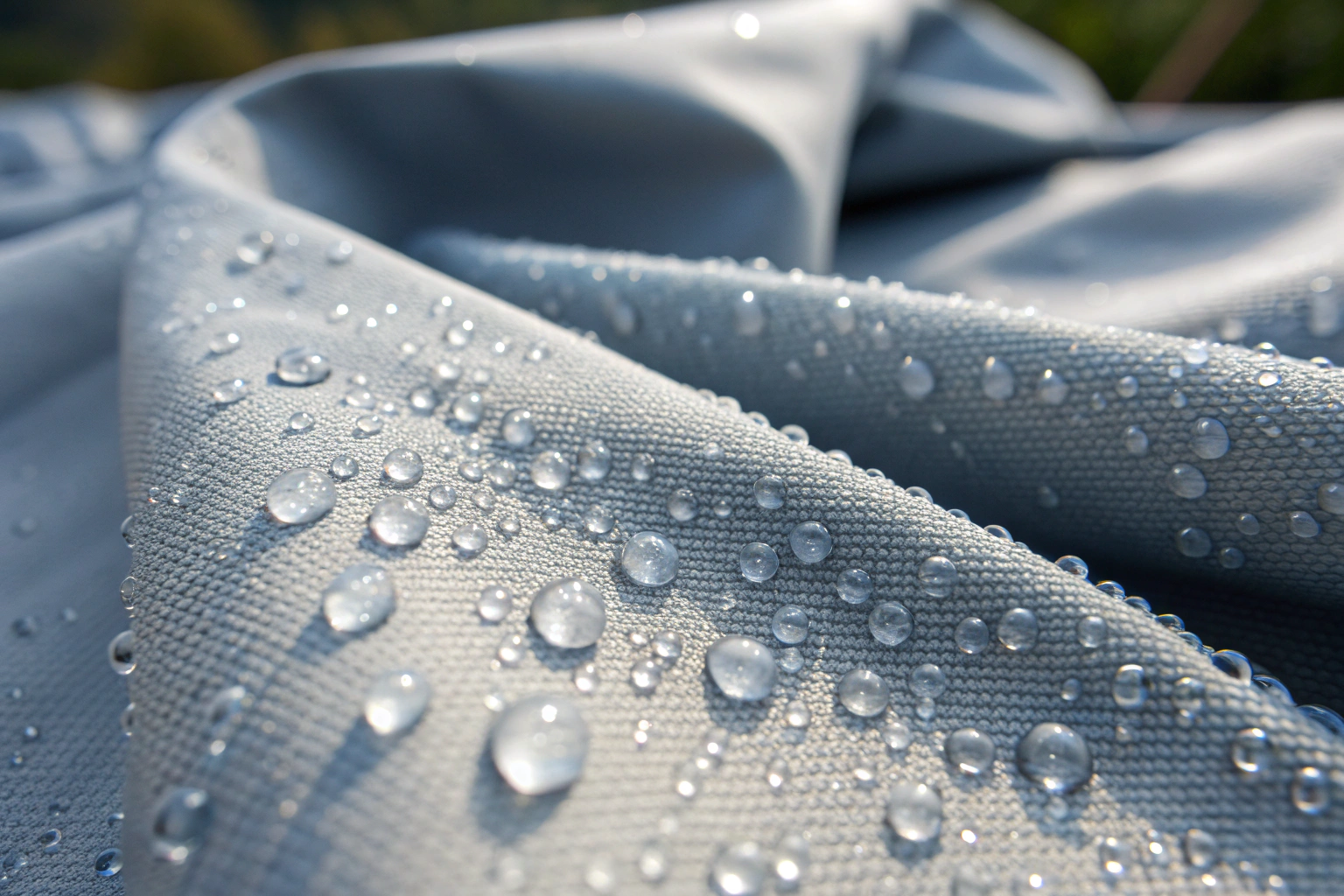Have you ever worn a jacket in heavy rain? You stay dry from the rain. Yet your own sweat still escapes. This seems like magic. It is actually advanced fabric technology. We supply these fabrics to global sportswear brands. Clients often ask us the same question. How can a fabric block outside water but release inside vapor? This paradox defines modern performance textiles.
The answer lies in microscopic pores. These pores are too small for liquid water droplets. However, they are large enough for water vapor molecules. This technology protects users from both rain and sweat. Understanding this science is crucial for brands. It helps in selecting the right fabric. It also assures end customers of true performance.
Let us explore this essential technology together. We will explain the science behind the membranes. We will compare the main types available. We will also show you how to verify their performance.
What Is the Basic Science Behind These Fabrics?
Picture a wall with billions of tiny holes. Each hole is 20,000 times smaller than a raindrop. But it is 700 times larger than a vapor molecule. This is the core principle. Liquid water from rain cannot pass through. This creates a strong barrier. Your body produces water vapor as sweat. This vapor passes through the membrane easily. You stay comfortable during active pursuits.
A difference in humidity drives this process. Temperature also plays a key role. The inside of the jacket becomes warm and humid. The outside air is cooler and drier. This creates a pressure gradient. The gradient pushes vapor molecules outward. This process is called moisture vapor transmission. These fabrics are "active" membranes. They need activity to work best.
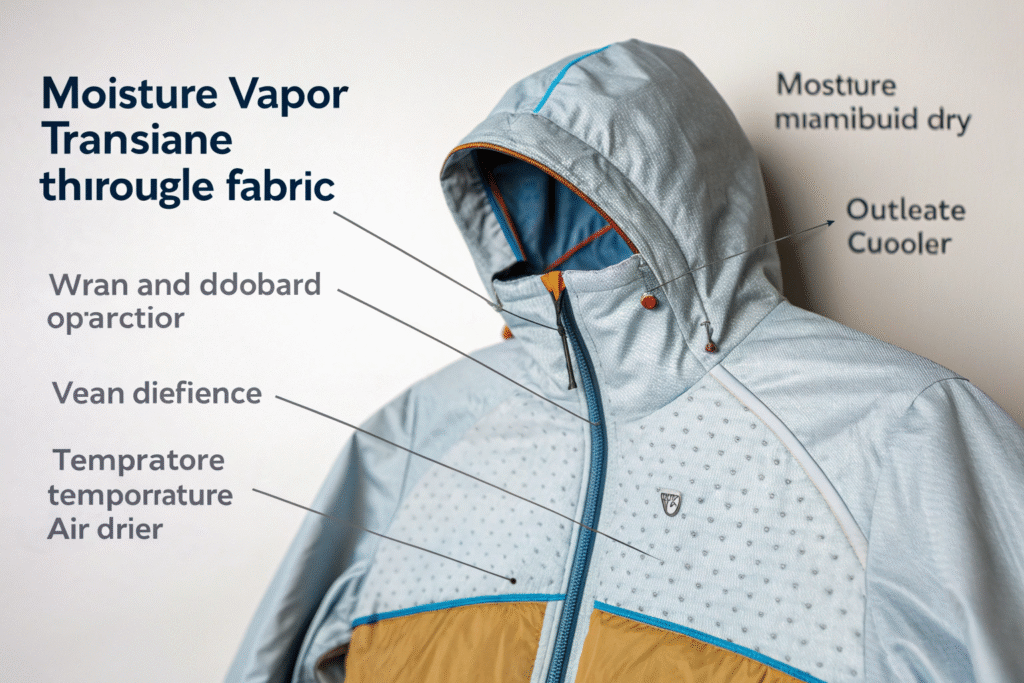
How Do the Micro-Pores Function?
Pore size is engineered with great precision. Polyurethane (PU) membranes have sponge-like structures. They absorb vapor on one side. They release it on the other side. Polytetrafluoroethylene (PTFE) is another material. Gore-Tex is a famous example. It is expanded to create a network of fine pores. These pores are permanent. They block liquid water permanently. They also allow vapor to escape. Consistent pore structure means high quality.
Why Is a DWR Finish Necessary?
A membrane alone is not sufficient. A Durable Water Repellent (DWR) finish is always added. The DWR finish makes water bead up. Water then rolls off the fabric surface. This stops the outer fabric from soaking up water. A soaked outer fabric blocks breathability. The membrane remains waterproof. But vapor gets trapped inside. This causes a clammy feeling. A good DWR keeps the fabric functional.
What Differentiates PU and ePTFE Membranes?
Two main types exist. They are Polyurethane (PU) and expanded Polytetrafluoroethylene (ePTFE). Each type has unique traits. They suit different applications and budgets. Brands must understand this difference. It helps match technology to the right garment.
PU membranes are versatile. They are also cost-effective. Some PU membranes have physical pores. Others are hydrophilic. Hydrophilic PU has no pores. It works by absorbing and moving vapor. PU can be engineered for specific needs. It can be windproof or elastic. Its reliability makes it popular for many apparel types.
ePTFE membranes are naturally micro-porous. Gore-Tex pioneered this technology. They offer high breathability. They are also very durable. Pure ePTFE can have one problem. Body oils and detergents can clog its pores. A thin PU coating usually solves this. This combination gives the best of both worlds.
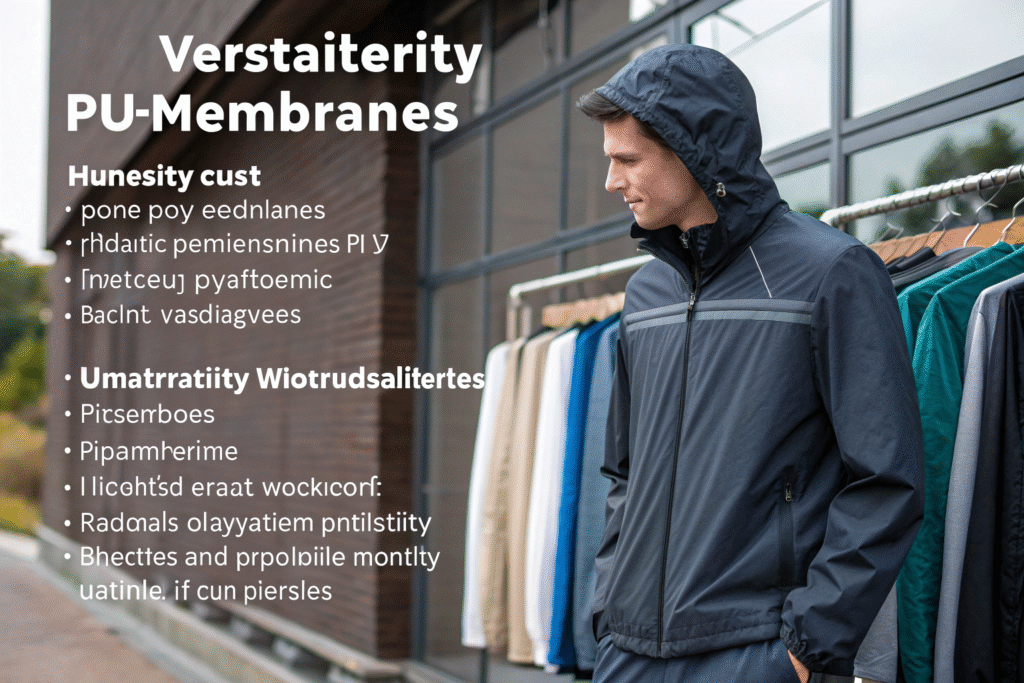
When Should Your Brand Choose PU?
Choose PU for cost-effectiveness and flexibility. It is ideal for mid-range rainwear. Fashion outerwear and workwear also use it. PU membranes allow direct lamination. This process creates softer and lighter fabrics. This benefits brands focused on comfort and style.
When Is ePTFE the Better Option?
Choose ePTFE for top-tier performance gear. It is superior for maximum breathability. Professional mountaineering suits use it. Ski jackets and tactical gear also use it. The pore structure allows higher moisture vapor transmission rates (MVTR). It is the gold standard for athletes. The brand trust behind Gore-Tex adds great value.
How Can You Verify Fabric Performance?
Buyers cannot judge performance by touch. They need standardized lab tests. These tests provide hard data. Our CNAS-certified lab runs these tests. We ensure every fabric meets global standards.
The Hydrostatic Head Test measures waterproofing. It checks water pressure resistance. Results are in millimeters (mm). A 10,000mm rating suits heavy rain and snow. This rating helps specify weather protection.
The Moisture Vapor Transmission Rate (MVTR) measures breathability. It calculates vapor grams passing per square meter per day. A higher number means better breathability. Tests like ISO 15496 are standard. They allow objective fabric comparison.
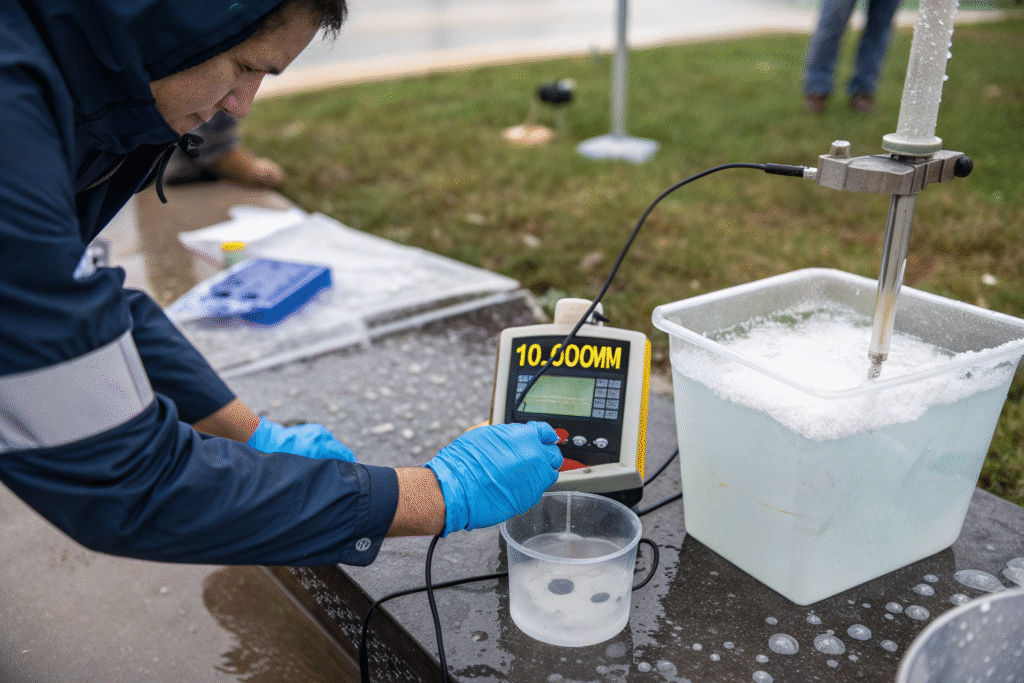
What Do Waterproof Ratings Mean?
These numbers come from Hydrostatic Head tests. They are not just marketing.
| Hydrostatic Head Rating | Suitable Conditions | Typical Application |
|---|---|---|
| 1,500 - 5,000 mm | Light to moderate rain | Everyday jackets, urban wear |
| 5,000 - 10,000 mm | Moderate to heavy rain | Hiking gear, ski jackets |
| 10,000 mm + | Very heavy rain, wet snow | Mountaineering, expedition gear |
This table guides fabric selection. It prevents over-specifying or under-specifying.
How Are Breathability Ratings Interpreted?
Ratings are in g/m²/24hrs. Different test methods give different numbers. Always check the standard used.
- 0 - 5,000 g/m²/24hrs: Good for low-activity use.
- 5,000 - 15,000 g/m²/24hrs: Good for general hiking.
- 15,000 g/m²/24hrs+: Excellent for high-exertion activities.
Ask suppliers for test reports from an independent lab like SGS.
How to Select the Right Membrane?
Choosing the right fabric requires balance. Consider performance, durability, cost, and design. No single membrane is the best. The best membrane fits your specific product. We help you navigate these choices.
First, consider the end-user. A trail runner needs high breathability and light weight. A construction worker needs durability and waterproofing. The fashion market values softness and quiet finish. Define the user's journey first.
Second, align performance with budget. ePTFE membranes cost more than PU. Premium brands can justify ePTFE. Value-oriented lines may prefer high-quality PU. We help find the optimal solution.
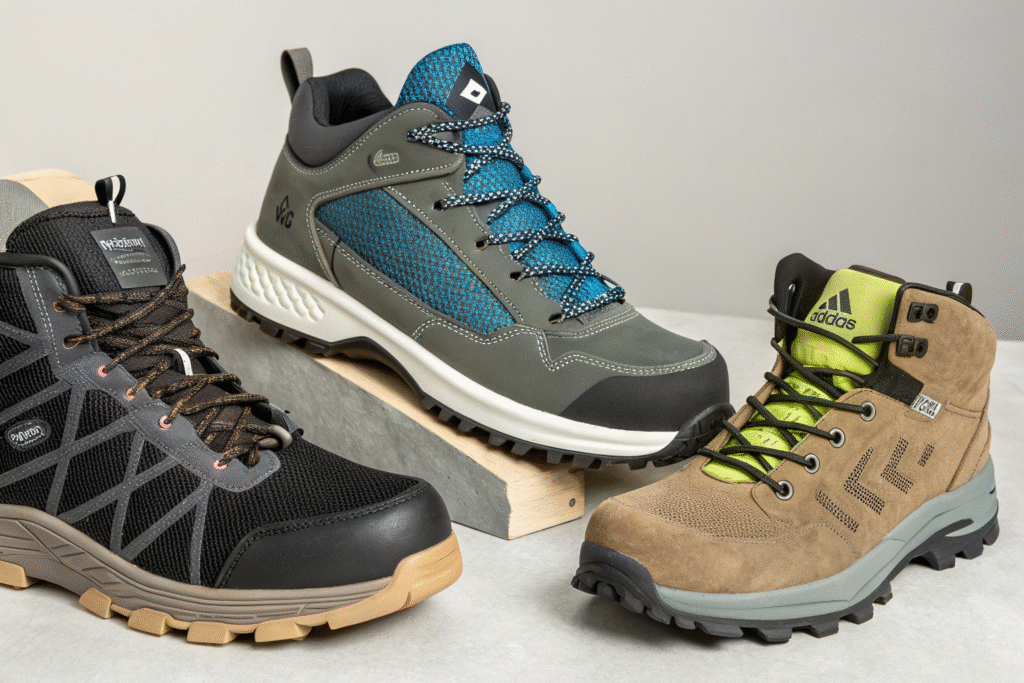
What Are the Key Trade-Offs?
The relationship between factors is clear.
- Cost vs. Performance: Higher performance often costs more.
- Weight vs. Performance: Lighter fabrics may be less durable.
- Cost vs. Weight: Making light, durable fabrics is costly.
How Does Fabric Construction Matter?
The "L" stands for Layer. It describes the membrane assembly.
- 2-Layer: Membrane is laminated to fabric. A separate liner is used. It is cost-effective and durable. But it is heavier.
- 3-Layer: Membrane is sandwiched between outer fabric and inner scrim. It is robust, lightweight, and packable. It is ideal for high-performance gear.
- 2.5-Layer: A partial layer protects the membrane. It is the lightest option. But it is less durable and comfortable. Your choice affects comfort, weight, and price.
Conclusion
Knowing how membranes work helps your brand. It leads to smarter sourcing. The science of micro-pores is fundamental. The differences between PU and ePTFE are practical. This knowledge develops high-performance apparel. The best garment balances all factors for its purpose.
Fumao Textiles provides integrated solutions. Our CNAS-certified lab tests every membrane. We verify hydrostatic head and MVTR data. We are based in China's main textile district. We have over 20 years of experience. We offer a full range of breathable waterproof fabrics. We guide you from material selection to production. Let us help you create your next outdoor wear collection. Contact our Business Director, Elaine. Her email is elaine@fumaoclothing.com. Discuss your fabric needs with her. Request samples today.

